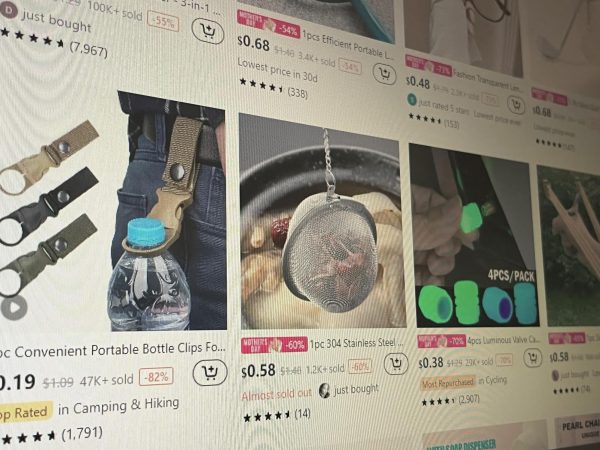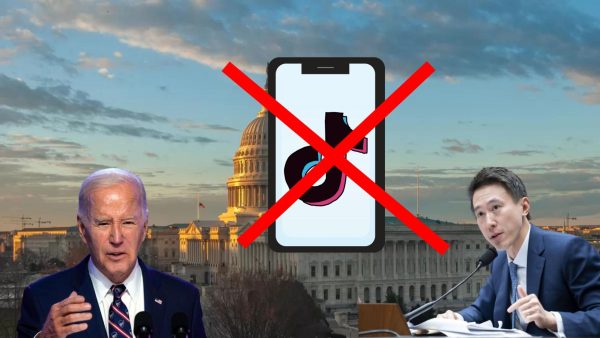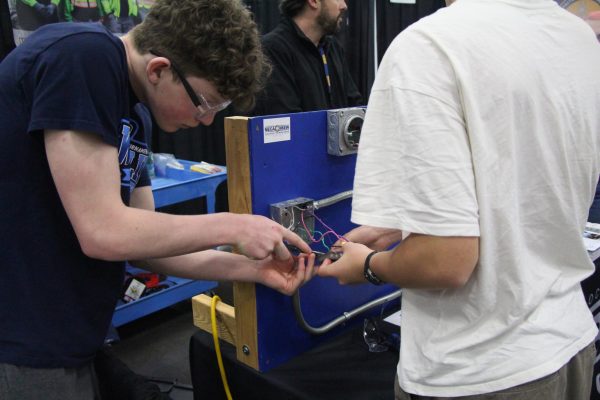Did Juul contribute to the teen vaping epidemic?
Juul agrees to pay out a 462 million dollar settlement for their role in the teen vaping epidemic
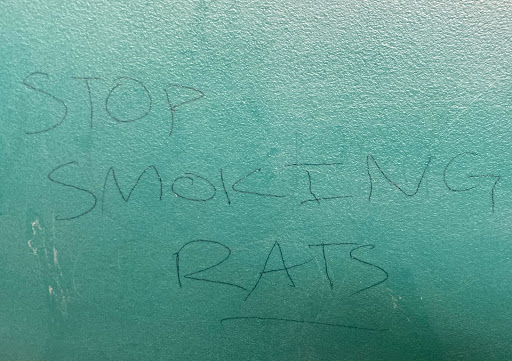
Graffiti found in second floor girls bathroom, expressing disagreement with people smoking in the bathroom
The popular vaping company Juul has reached a settlement in a lawsuit involving their role in the teen vaping epidemic. Juul has agreed to pay $462 million in settlements to six states.
The settlement that involves New York, New Mexico, California, Illinois, Massachusetts, and the District of Columbia is only the latest in a series of lawsuits and settlements for the company. The lawsuit states that Juul did not properly warn its consumers of the dangers of their product and marketed directly to underage teenagers. One of the reasons Juul was so popular was because their vapes looked like USB flash drives, which meant that teens could easily hide it from parents and teachers. They created fruity and candy flavors that appealed to the younger generation.
Numerous organizations, including the Truth Initiative and The Real Cost, continue to try and curve the rates of electronic cigarette (e-cigarette) use in adolescents, mainly by spreading information about the side effects of vaping through ads targeted to educate teenagers. However, teens still have misconceptions about e-cigarettes. Some believe that vapes only produce harmless water vapor, or that they don’t contain any of the harmful ingredients that cigarettes do. Research by the UCLA Center for Health Policy Research suggests that roughly 48%, nearly half of all e-cigarette users are underage.
State attorney generals from the six states that reached the settlement claimed that Juul marketed directly to teenagers, and that their consumers were unaware of how much nicotine their products actually contained, or if they were aware that Juul products contain nicotine at all. New York attorney general Letitia James claims that Juuls actions lead to the vaping public health crisis.
“Juul’s lies led to a nationwide public health crisis and put addictive products in the hands of minors who thought they were doing something harmless,” James said in a press interview.
Jackson Borcherding, freshman, wonders whether teens are aware of how much nicotine vapes contain..
“Maybe subconsciously they might think on it, for a second,” Borcherding said.
To some, the idea that vape products don’t contain nicotine may seem silly. 99% of all e-cigarettes sold in the United States do contain nicotine. Most people who use e-cigarettes vape for the nicotine high, but some believe that the vape products they use do not contain nicotine, believing that they purchased a nicotine-free vape product. Most who do believe that their vape was made to be a therapeutic device not containing any substance, or that it only contains cannabidiol (CBD). Some may be right, but some would be wrong.
A study published by the Journal of Pediatrics shows that teens who vape may be unaware they are vaping nicotine. 40% of those who claimed to use nicotine free e-cigarette products had significant levels of nicotine in their blood. This ties into the claims by state attorney generals that many teens thought that Juul offered nicotine-free products, despite the fact that they do not.
The settlement doesn’t just involve money. It limits the ways Juul will be allowed to advertise its products. Federal law prohibits television advertising of tobacco products, and restricts billboard and magazine ads. It also states that Juul products will have to be locked behind counters like normal cigarettes to ensure that purchasers will have to provide ID.
Juul had tried to obtain the Food and Drug Administration (FDA)’s premarket tobacco product applications, which it needed to sell tobacco products in the U.S. In June 2022, the FDA denied their application, putting a ban on the company selling their products. They put a hold on that decision a month later, so they are currently allowed to sell their products in the U.S.
Although Juul products and other vapes are often bought online by teenagers, and many online vape shops do not like it, many still hope that this will curb the amount of teenagers who have access to vapes. More than 2.5 million students ages 11—18 vape in the U.S. according to the CDC. Vaping in schools has become a problem for many. It is a problem for students who don’t vape too. When students vape in school they often do it in places like the restrooms. It exposes those who don’t use e-cigarette to their vapor, and some are afraid that they may be punished for vaping even if they are in the general vicinity of those who are, or if an adult smells it on their clothes. Lillyana Farrens, junior, caught some vaping in the bathrooms recently.
“It’s annoying that they vape, I don’t wanna be seen walking out of the bathrooms while they were vaping because I refuse to be blamed for that,” Farrens said.
State officials hope that this lawsuit will help lower teen vaping rates. This is only one of the many lawsuits that Juul has and is currently facing, but many consider this to be a big win for those who wish to protect teens from substance use.
Your donation will support the student journalists of West Linn High School. Your contribution will allow us to continue to produce quality content by purchasing equipment, software, and continuing to host our website on School Newspapers Online (SNO).

M Davis, sophomore, is the current events section editor for wlhsNOW. This is their first year as a section editor. In their free time, they enjoy creative...


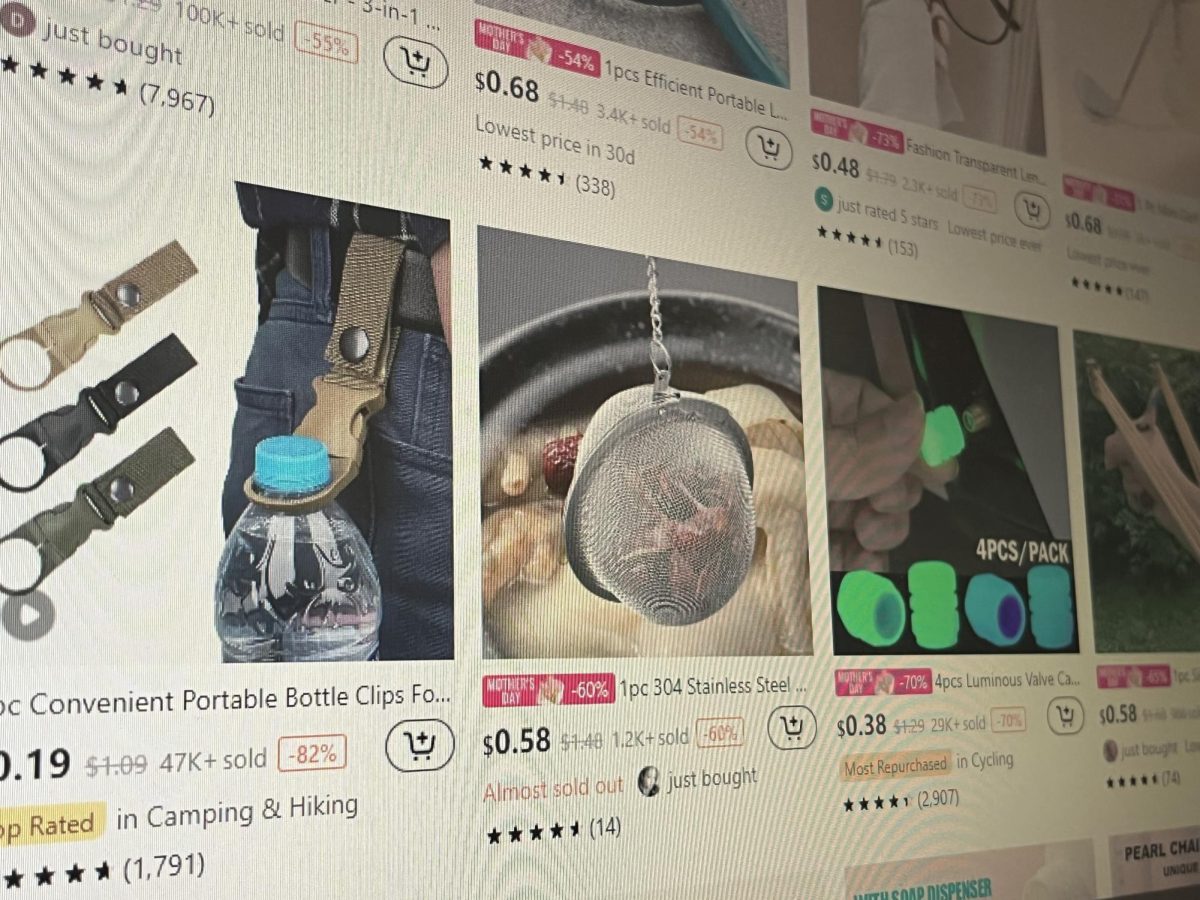























![Game, set, and match. Corbin Atchley, sophomore, high fives Sanam Sidhu, freshman, after a rally with other club members. “I just joined [the club],” Sidhu said. “[I heard about it] on Instagram, they always post about it, I’ve been wanting to come. My parents used to play [net sports] too and they taught us, and then I learned from my brother.”](https://wlhsnow.com/wp-content/uploads/2024/03/MG_7715-2-1200x800.jpg)





![The teams prepare to start another play with just a few minutes left in the first half. The Lions were in the lead at halftime with a score of 27-0. At half time, the team went back to the locker rooms. “[We ate] orange slices,” Malos said. “[Then] our team came out and got the win.”](https://wlhsnow.com/wp-content/uploads/2023/10/IMG_2385-1200x800.jpg)





![At the bottom of the third inning, the Lions are still scoreless. Rowe stands at home plate, preparing to bat, while Vandenbrink stands off to the side as the next batter up. Despite having the bases loaded, the team was unable to score any runs. “It’s just the beginning of the season. We’re just going to be playing out best by June, [and] that’s where champions are,” Rowe said.](https://wlhsnow.com/wp-content/uploads/2024/03/IMG_3077-1200x900.jpg)




































































